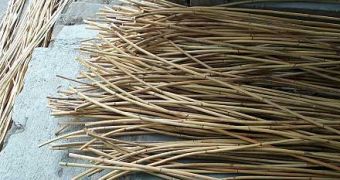Specialists working with the National Research Council of Italy now claim that rattan can successfully be used as bone replacement when it comes to helping patients whose skeleton was harmed in various ways.
For those unaware, rattan is a generic term used to describe roughly 600 species of palms which are native to the tropical regions of Africa, Asia and Australasia.
Up until now, rattan was mostly used to manufacture furniture, yet it is these researchers' belief that it might also render metal and other artificial bone substitutes obsolete, Daily Mail reports.
Since metal alloys, ceramics and other bone replacements commonly used nowadays tend to be rather expensive and sometimes even cause compatibility issues, the researchers believe that turning towards rattan instead would bring several benefits both in terms of costs, and in terms of better patient care.
This is because rattan and human bone have a fairly similar structure, meaning that, once the cellulose, the lignin and other biological components are removed from the wood and all that remain is the carbon skeleton, chemical compounds such as calcium, oxygen and phosphate can be added.
As the specialists explain, this would lead to the engineering of a porous material that looks and behaves as human bones do.
“The processing of the raw wood to remove chemical components incompatible with implants for humans is long and complex but the benefits of producing a material that is so similar to bone and can be shaped to fit perfectly far outweigh such issues,” reads the study published by these researchers in the International Journal of Healthcare Technology and Management.
For the time being, bone replacements made from rattan have only been tested on animals, yet there is hope that human clinical trials will soon follow.
“At present the innovation is being tested on animals with optimal results, and tests of the device on humans are foreseen given the very positive assessment of medical personnel involved in tests,” the researchers explain.

 14 DAY TRIAL //
14 DAY TRIAL //